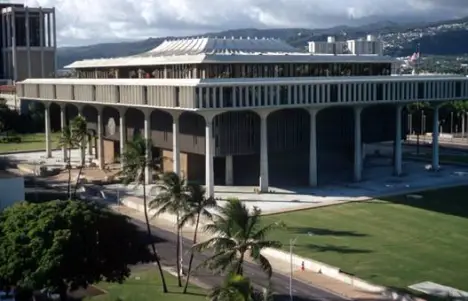A number of the bills passed by the House and now referred to Senate committees were introduced by Representative Mark Nakashima, District 1 (Hamakua, North Hilo, Rural South Hilo). This year, Nakashima has the added responsibility of serving as Chair of the House Committee on Labor and Public Employment.
“Under the leadership of House Speaker Joseph Souki, I am privileged to serve as Chair of Labor and Public Employment, which has jurisdiction on many critical issues impacting our families including the minimum wage, sick leave, worker’s compensation, unemployment insurance, and collective bargaining, said Nakashima.
Nakashima said he was pleased these measures were approved by the House and added, “I also am continuing my efforts to create a more self-sufficient Hawaii. Since my election to the House in 2008, I have supported a platform that includes energy self-sufficiency, agricultural sustainability, and economic independence.”
Listed below are several key bills on labor, energy self sufficiency, and economic independence introduced and supported by Representative Nakashima:
- HB 1028 HD2 that spreads out the increase in the minimum wage across three years instead of immediately spiking up $1.50 on January 1, 2014. Unemployment premium relief was also extended to allow businesses to more fully recover.
- HB 152 HD1, which would increase the fee reimbursement schedule to 130% of Medicare resource base to encourage doctors to take workers compensation patients.
- HB 435 HD1would establish the Office of Talent Management within the Department of Human Resources Development to design and facilitate state initiatives in the areas of talent administration, professional development, performance management, and leadership enterprise. The measure authorizes the talent management administrator to receive from any state agency services, facilities, and the data necessary.
Related to energy self-sufficiency:
- HB 450 HD1 would require the Department of Business, Economic Development & Tourism (DBEDT) to establish a hydrogen fueling station demonstration project in qualifying counties. The hydrogen will be produced from renewable sources of energy, such as geothermal. This will further develop the capability of Hawaii Island as well as the State to utilize renewable energy for ground transportation in addition to generating electricity.
Related to agricultural sustainability:
- HB 749 would establish the Hawaii Agriculture Workforce Advisory Board, which would help support the local agricultural industry by securing the employment pipeline from school to farm. This would be achieved through support of school gardening programs, the Future Farmers’ of America, and Agriculture teacher in service training.
- HB 414 HD2 would establish a Waipio Valley Commission to advise the Department of Land and Natural Resources (DLNR) on the development of a long term plan to ensure the proper stewardship and maintenance of Waipio Valley. The bill also appropriates funds to implement a stream maintenance program recommended by the Mauna Kea Soil and Water Conservation Service.
Related to economic independence:
- HB 750 HD2 seeks to create the Hawaii Island Technology Exchange Institute. To be successful in the twenty-first century global economy, Hawaii must position itself as a leader in science and technology, in particular, technology development, transfer, and commercialization. HB750 will establish the Hawaii Island Technology Exchange Institute at the University of Hawaii at Hilo through a collaboration between UH Hilo and Hawaii Community College.
- HB 417 HD2 seeks to address the shortage of primary care providers and improve access to healthcare in general by appropriating funds for the interdisciplinary Hawaii Health Systems Corporation Primary Care Training Program at Hilo Medical Center by funding the medical residency program and allied medical support services training.
A final, but very significant measure, HCR 42, was passed by both the House and the Senate.
- HCR 42 requesting the Department of Transportation to designate, when appropriate, Route 200 on the Island of Hawaii as the Daniel K. Inouye Legacy Highway. In honor of the decades of dedicated service, sacrifice and leadership demonstrated by Senator Daniel K. Inouye, we propose naming Route 200, or Saddle Road, on Hawaii Island in the Senator’s name. The resolution passed and is now awaiting action by the Senate.
Filed under: aloha, Announcements, Big Island, Economy, Education, Hawaii, Legislature, State Affairs | Tagged: Hawaii, Hawaii Community College, Hawaii House of Representatives, University of Hawaii Hilo | Leave a comment »
































